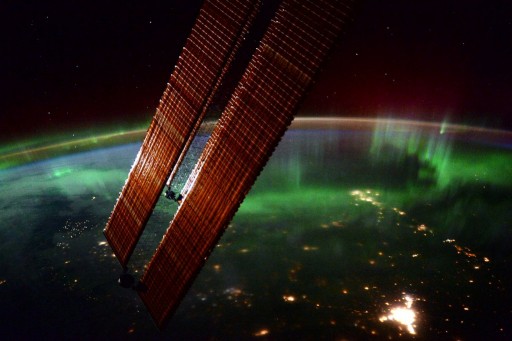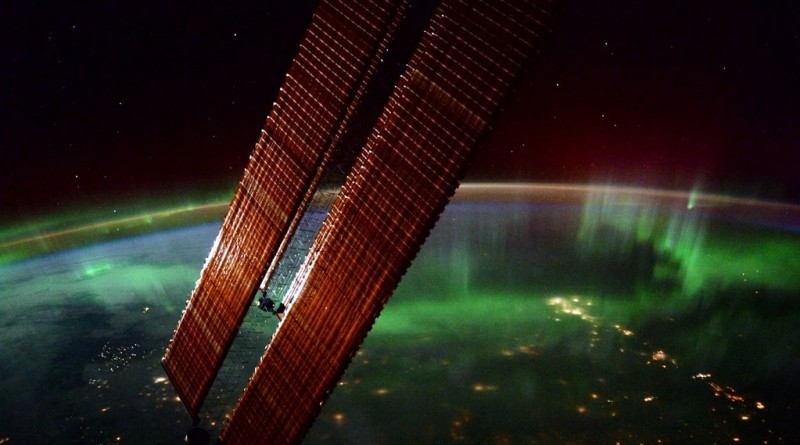ISS Operations Update – January 19, 2016

Experiments:
Electrostatic Levitation Furnace (ELF) Setup in Multi-purpose Small Payload Rack 2 (MSPR2) [The Electrostatic Levitation Furnace will provide ISS with its second Materials Science facility operating on the basis of electrostatic levitation, alongside the Electromagnetic Levitator that is active aboard the Columbus laboratory, studying fundamental principles of metallurgy. Heating and melting samples of metal alloys or other materials in a zero-G environment followed by the solidification of the sample yields a very pure material without any contaminations. The study of the solidification process and the finished product can provide valuable knowledge concerning the properties of the material that could improve production techniques on Earth for better material properties in alloys, glass and ceramics.]
SOLAR – ESA’s SOLAR sun observation experiment is currently collecting measurements of solar spectral irradiance and variability. The experiment window extends through Jan 22.
Pilot-T [This experiment puts crew members through complex tasks, such as piloting a space vehicle, at various stages of a long-duration mission to assess crew member performance reliability over long mission durations.]
Fine Motor Skills [Fine Motor Skills uses a tablet touchscreen application to monitor degradation in fine motor abilities over the course of an extended exposure to microgravity. A drop in fine motor skills can lead to problems when crew members are tasked with medical treatment, repairing sensitive equipment and interacting with touch-based equipment. Tests utilized by this study include multidirectional pointing, dragging, shape tracing, and object manipulation to create a knowledgebase that will allow scientists to evaluate the risk of fine motor performance decrements due to long-duration exposure to microgravity.]
Seismoprognoz Data Download [Seismoprognoz will measure the temporal and spatial scales of ionospheric disturbances caused by seismic phenomena in order to develop algorithms to detect plasma features of earthquakes and anthropogenic impacts from space-based instruments. The payload consists of an external monoblock, a Data Control and Acquisition Module, an attachment kit, flash memory and associated cables and connectors.]
Habitability Experiment Ops [Assessment of International Space Station Vehicle Habitability will see teams on the ground study video of the behavior of crew members within the habitable environment of ISS while the crew fills out questionnaires and collects video of areas of interest in order to provide an assessment of the habitability of ISS in its current state for a one-year mission. Results will be used to develop spacecraft with improved habitability properties to allow crew members to optimally utilize the onboard space.]
Interactions Experiment [‘Vzaimodeistviye’ (Interactions) looks at psychological aspects of long duration space flight during which different cultures come together aboard a Spacecraft such as ISS and seeks to improve crew interactions aboard ISS and with teams on the ground.]
Maintenance/Systems:
Nominal Inspections/Servicing Tasks (Morning Inspection, Caution & Warning Panel Check, Sozh System Maintenance) (Russian Crew)
Node 3 Carbon Dioxide Removal Assembly: The Node 3 CDRA experienced a fault likely related to Hub Control Zone (HCZ) Multiplexer/Demultiplexer comm issues. Re-start attempts were not successful and teams initiated a review to develop forward steps. Lab CDRA and Vozdukh remain active, keeping ISS cabin CO2 at nominal levels.
NORS (Nitrogen/Oxygen Recharge System): Installation of Oxygen Recharge Tank delivered on OA-4 and initiation of oxygen transfer to Airlock High Pressure Gas Tanks.
Crew Quarters Baseplate Ballast Assembly (BBA) Replacement to restore illumination
IP-1 Airflow Sensor Position & Performance Verification
Other Activities:
Post-EVA Operations: Airlock Deconfiguration and EMU transition to storage mode
PAO Video Collection

